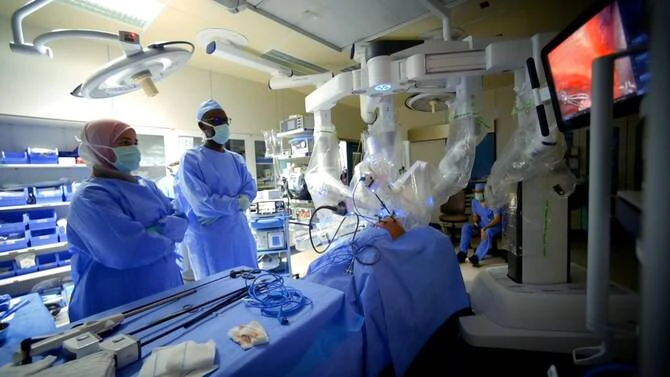MAKKAH: King Abdullah Medical City (KAMC) in Makkah has successfully conducted its first robotic thoracic surgery using the advanced ‘Da Vinci Xi surgical system’, marking a major milestone in the institution’s commitment to cutting-edge medical technology.
The surgery involved a male patient in his thirties who was experiencing recurring air accumulation in his left chest cavity, leading to persistent breathing difficulties. Diagnostic tests revealed cysts in the upper and lower lobes of his left lung, which were successfully removed during a 90-minute robotic procedure. The lung was then reattached to the chest wall.
Dr. Adel Tash, CEO of KAMC, described the procedure as a significant step forward in specialized healthcare delivery in the Kingdom.
The operation was led by Dr. Muteb Al-Zaidi, a consultant in thoracic, esophageal, and gastric surgery, with support from assistant consultant Dr. Ayman Jaafar and a specialized team from the anesthesia and nursing departments. The surgery was performed using minimally invasive endoscopic and robotic techniques.
Dr. Tash explained that robotic surgery provides high precision through a 3D high-definition camera, enabling surgeons to access complex areas with minimal incisions, typically no more than 1 centimeter.
Compared to traditional surgeries requiring incisions over 10 centimeters, robotic surgery significantly reduces pain, shortens recovery time, and improves overall outcomes.
The introduction of the Da Vinci system at KAMC makes it one of the first medical institutions in the Western Region to adopt this technology.
The robotic platform consists of three main components: the surgeon console, the patient cart with robotic arms and instruments, and the vision cart for imaging and processing. It enhances a surgeon’s capabilities without operating autonomously, the surgeon retains full control throughout the procedure.
Following the successful thoracic surgery, KAMC used the system in a second procedure involving a patient with uterine cancer. That surgery also concluded without complications, and the patient was discharged within 24 hours.
As part of its broader vision, KAMC plans to expand the use of the Da Vinci system across multiple specialties, including urology, gastrointestinal and cardiac surgery, bariatrics, and general surgery.
The hospital also aims to incorporate virtual reality simulations for physician training and integrate smart analytics and AI to further improve surgical precision and outcomes.
Dr. Tash reaffirmed KAMC’s commitment to adopting the latest medical technologies in line with the goals of Saudi Vision 2030. “Our mission is to provide advanced, safe, and patient-centered care, and to become a model for high-quality healthcare services in the region,” he said.








